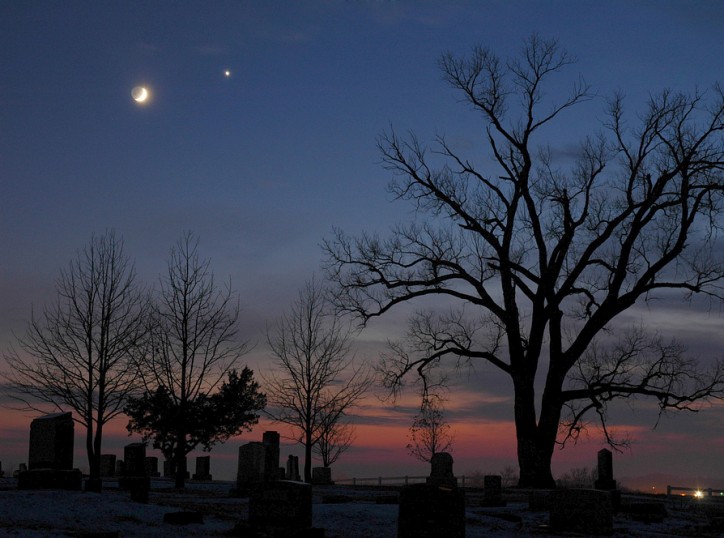Translation
Recordings
Sleeping on It
Setting Speculation in a Bed of Structure
Closing
Back To Top
Abstract
Some action parallel to that of the previous stanza occurs, as the evening star fades.
Back To Top
Translation
"As the light of the evening star fades,
Charm's humour is given to
The drowsy dew of fleeting passion."
("Dum Diane vitrea" Stanza 2)
Back To Top
Recordings
Watch for the recordings of the whole poem once its translation is fully posted (around November 20).
Back To Top
Sleeping on It
Time is a tricky thing to pin down when it's not referred to with a clock reference.
All the same, this brief stanza looks like it's about the point in a typical night when people would rise from sleep for a brief period to do some night activities. This dual-phase sleep practice goes back to the pre-artificial light days, when people would go to bed around sunset, wake around midnight and then go back to bed two hours later until day break.
It might sound a little useless to sleep in bursts like this, but aside from the practical purposes (like guard shifts), sleeping in two phases seems to make the mind more perceptive and to really help cognition (just ask any regular napper).
More to the point for our poem, with this bi-phasal sleeping pattern in mind this stanza describes the influence of Venus, the evening star ("Hesperus") on the people as they sleep. This stirs their passions and their loins as "the drowsy dew of fleeting passion" ("roris soporiferi
mortalium generi") falls upon them.
To be more direct, the couples in the poem have sex - one of the many things that people would do during their nightly two hour vigil. And an activity that's quite perfectly suited to that time between sleeps. After all, you'd be out working all day and probably a little to weary and weighted to be in the mood for sex before sunset, but after that initial rest, your mind would be relaxed, your loins would be fired,and you'd be ready for it.
So perhaps the action of last week's stanza wasn't so much about the power of palour to assauge the woes of a person's public life and to soothe them as it was simply about the moon rising (since it would be the middle of the night) when people woke after their first shift of sleep.
Back To Top
Setting Speculation in a Bed of Structure
As per how these two stanzas work together, this one doesn't seem to be moving anything forward, rather it just describes another act that goes on during the action of the first stanza.
As Diana rises in the moon and the stars come out, the evening star fades and its influence over the sleepers is complete as they awake and are ready to consummate the desire of their hearts.
Structurally, it's also likely that this stanza would work as the first chorus of this poem as a song. After all, it is from the "Carmina Burana" - a collection of such songs. Further, this stanza's brevity also suggests that it's a chorus.
Yet, however "Dum Diane vitrea" develops from verse to chorus to verse to chorus and onwards will need to be seen next week.
Back To Top
Closing
Leave your thoughts on my theories in the comments for today's entry, and check back here on Thursday for how the poet portrays Wiglaf's immediate reaction to Beowulf's death.
Back To Top

No comments:
Post a Comment